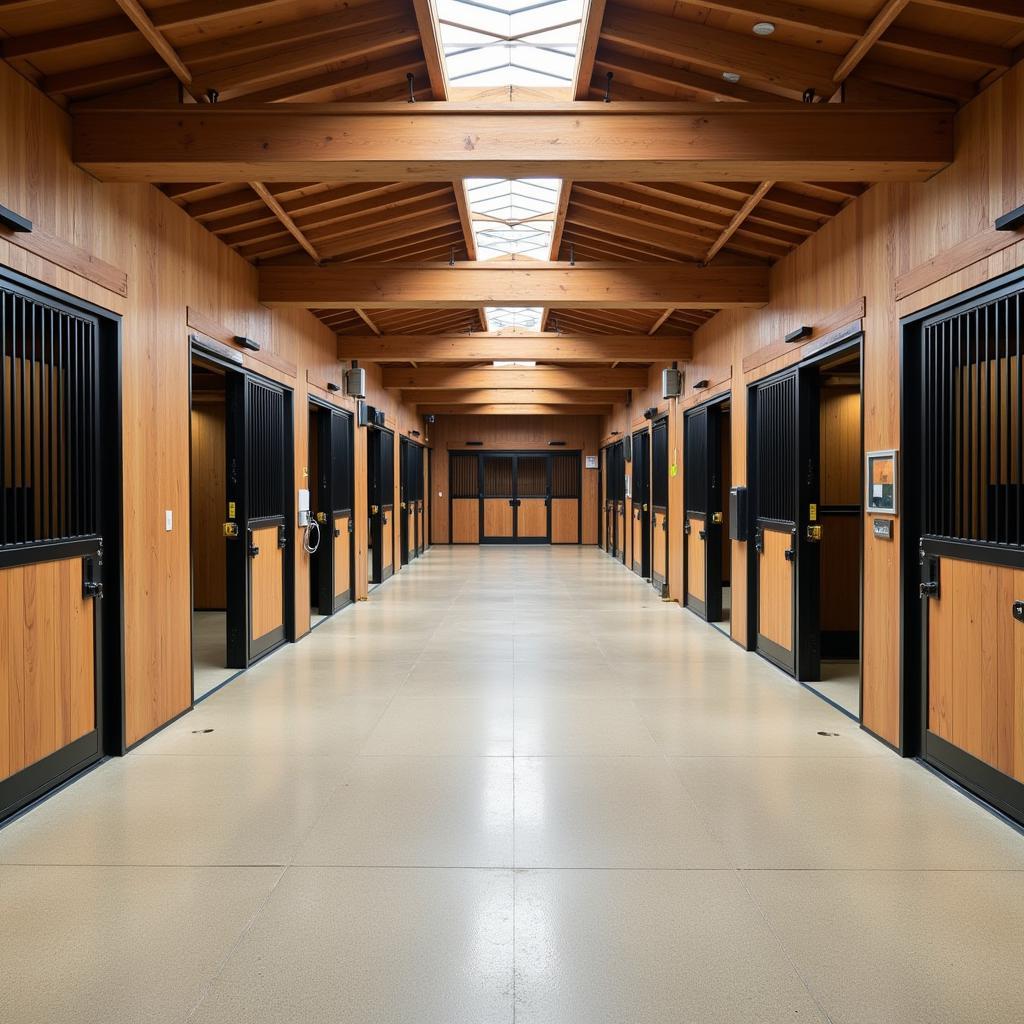Japanese Horse Stables, deeply rooted in tradition and evolving with modern advancements, offer a unique glimpse into the relationship between humans and horses in Japan. From ancient samurai mounts to beloved companions and racing champions, horses hold a special place in Japanese culture, and their stables reflect this profound connection.
A Glimpse into History: Japanese Horse Stable Evolution
For centuries, Japanese horses played vital roles in warfare, agriculture, and transportation. Their stables, therefore, were designed with functionality and practicality in mind. Traditional Japanese stables often utilize natural materials like wood and bamboo, creating a harmonious blend with the surrounding environment. These structures prioritized ventilation and natural light, crucial for the well-being of the horses.
While functionality remained paramount, aesthetics were not overlooked. The craftsmanship displayed in traditional Japanese stables is a testament to the respect and care afforded to these animals. Many stables incorporated intricate details and decorative elements, showcasing the cultural significance of horses in Japan.
Modernizing Tradition: The Contemporary Japanese Horse Stable
Today, Japanese horse stables seamlessly blend traditional principles with modern innovations. While respect for the past remains evident, contemporary stables incorporate advanced technologies and materials to optimize horse care and management. Climate control systems ensure comfortable temperatures year-round, while specialized flooring provides cushioning and support for the horses’ legs.
Modern Japanese horse stables also emphasize hygiene and biosecurity. Advanced ventilation systems minimize dust and airborne pathogens, while meticulously designed drainage systems facilitate efficient cleaning and waste removal. These advancements contribute significantly to maintaining the health and well-being of the horses.
 Modern Japanese Horse Stable Interior
Modern Japanese Horse Stable Interior
Horse Care in Japan: A Blend of Tradition and Science
Japanese horse care practices reflect a deep understanding of equine needs, blending time-honored traditions with modern veterinary science. Grooming rituals, often passed down through generations, not only enhance the horse’s appearance but also contribute to its physical and mental well-being. These practices often involve specialized tools and techniques, demonstrating the meticulous care provided to Japanese horses.
Nutrition is another crucial aspect of Japanese horse care. Diets are carefully formulated to meet the specific needs of each horse, taking into account factors such as age, breed, and activity level. Modern nutritional science plays a vital role in ensuring that Japanese horses receive the optimal balance of nutrients for optimal performance and health.
“A well-balanced diet is fundamental to a horse’s health and longevity,” explains Dr. Kenji Tanaka, renowned equine veterinarian and nutritionist based in Tokyo. “We strive to provide our horses with the best possible nutrition, combining traditional knowledge with the latest scientific advancements.”
Beyond the Stable: Japanese Equestrian Culture
Japanese equestrian culture extends beyond the stable walls, encompassing various disciplines and traditions. From traditional horseback archery (Yabusame) to modern equestrian sports, horses continue to play an integral role in Japanese society. The dedication and passion of Japanese equestrians are reflected in the meticulous care and attention they provide to their horses, ensuring their well-being and fostering a strong bond between human and animal.
Conclusion: A Legacy of Care and Innovation in Japanese Horse Stables
Japanese horse stables, from their traditional roots to their modern iterations, represent a unique blend of cultural heritage and scientific advancement. The deep respect and care afforded to horses in Japan are evident in every aspect of stable design, management, and horse care practices. By embracing innovation while honoring tradition, Japanese horse stables continue to evolve, ensuring the well-being of these magnificent animals for generations to come.
“The bond between horse and rider is sacred,” shares Ms. Akiko Sato, a seasoned horse trainer from Hokkaido. “We strive to create an environment where this bond can flourish, based on mutual respect and unwavering care.”
FAQ
- What are the key features of a traditional Japanese horse stable?
Traditional stables prioritize natural materials, ventilation, and natural light, often incorporating intricate details and decorative elements. - How do modern Japanese stables differ from traditional ones?
Modern stables incorporate advanced technologies like climate control and specialized flooring, emphasizing hygiene and biosecurity. - What are some common horse care practices in Japan?
Grooming rituals, specialized diets, and a blend of traditional knowledge and modern veterinary science are common practices. - What role do horses play in Japanese culture?
Horses have played vital roles in warfare, agriculture, transportation, and various cultural traditions, and continue to be valued in modern equestrian sports. - Where can I learn more about Japanese equestrian culture?
Explore online resources, books, and cultural centers dedicated to Japanese history and equestrian practices.
Need help with your horse or pet care? Contact us 24/7 at Phone: 0772127271, Email: [email protected] or visit us at QGM2+WX2, Vị Trung, Vị Thuỷ, Hậu Giang, Vietnam.